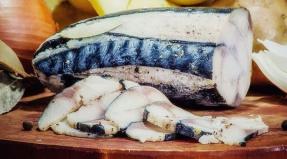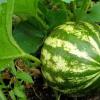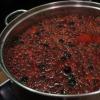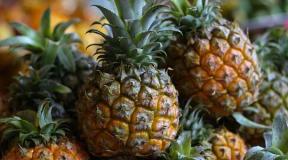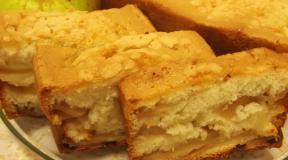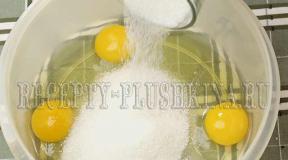Cold pickling of tomatoes for the winter in a bucket, barrel, jar under a nylon lid. How to cold salt tomatoes in jars: step-by-step homemade recipes
Many housewives are faced with the need to preserve tomatoes until winter. Cold salting recipes will help with this. This method does not require any special culinary skills. The taste of tomatoes is rich and spicy, as if salted inside a wooden barrel.
How to pickle tomatoes for the winter in jars
When a large supply of fruits appears in the garden, there is a need to preserve them until winter. An excellent option for harvesting tomatoes is salting. The cold canning method is able to keep a maximum of nutrients inside. At the same time, the preservation in the jar resembles the taste of the barrel one. If you follow the rules of this process, you will get salting, as in the old days.
Preparing canning jars
Cold pickling of tomatoes for the winter involves careful preparation of the vessels where the vegetables will be placed. This process uses glass containers. In most cases, banks of large volumes are chosen. To prepare them, they must be thoroughly washed using a soda solution, rinse it off. Then, you should pour boiling water over the containers and hold it over steam for a while to kill bacteria. Another sterilization method is heating in the oven. Immediately place the fruits in the prepared vessels, roll them under metal lids or close them with nylon ones.
How to salt tomatoes
Harvesting salted tomatoes is a snack recipe that our ancestors used. In ancient times, they were placed in large wooden tubs or barrels that could reach the height of a child's chest. Poured vegetables with cold brine with a high content of salt and spices. The ingredients helped to preserve the beneficial properties of the plant for the winter. Barrel tomatoes turned out to be very tasty and spicy.
However, today it is difficult to cold saline them inside the barrel. Therefore, many housewives try to achieve the desired taste using glass jars. To get high-quality salted vegetables, you need to strictly follow the recipe and technology. It is important to make the right pickle and choose the right type of fruit. Salting technology requires compliance with the following stages:
- processing of vegetables and containers;
- brine preparation;
- laying tomatoes and spices;
- pouring with cold brine;
- closing with a lid.
Which tomatoes are best for pickling
Requires the correct selection of fruit varieties. Among them, you can choose the following:
- Oak - the variety is characterized by a rounded shape and small size, it is conveniently placed inside salting vessels. Gives an amicable and early harvest.
- Lyana - produces large fruits that are approximately equal in size. Tomatoes of this variety are dense and very tasty, they ripen early.
- Fighter - has an elongated shape with a pointed tip, fits well inside the can.
- The truffle is red - shaped like a pear, with a ribbed surface. It perfectly tolerates salting, does not fall apart. The fruit tastes sweet.
Cold pickle for tomatoes
Cold pickling tomatoes requires making a pickle. It is made from sugar and salt. You can add spices: bay leaves, currant and cherry vegetation, pepper or mustard. The ingredients depend on the recipe you choose. The easiest way to get a fill involves dissolving a tablespoon of salt in 1 liter of water. The solution must be boiled and then cooled. Tomatoes, laid in containers, are poured with cold brine.
Recipe for pickling tomatoes for the winter in jars
Popular recipes for cold canning can answer the question of how to salt tomatoes correctly. Any gourmet will find a snack suitable for its taste and aroma. It is important to strictly follow the recipe and maintain the workpiece for a certain amount of time. Self-made pickles will help diversify the winter menu and preserve the beneficial properties of the fruit.
How to pickle tomatoes quickly in a cold way
Salting tomatoes for the winter quickly in a cold way according to an old recipe involves the use of the following components:
- ground red pepper - 1/2 tsp;
- dill (seeds);
- vinegar essence - 1 tbsp. l .;
- table salt - 1 tbsp.;
- tomatoes - 2000 g;
- water - 5 liters;
- granulated sugar - 2 tbsp.;
- black currant leaves - 1 handful;
- horseradish leaves.
Instructions on how to cold salt tomatoes:
- Start by preparing the brine. Add sugar, salt, currant greens to the water, add red pepper. Place on a flame, wait for signs of boiling, leave to simmer for a few minutes. Then, remove and let cool. Pour vinegar into the cooled liquid.
- Place the spices on the bottom of clean jars, then fill the vessels with tomatoes. Pour the brine over the vegetables in the jars, roll up the metal lids and leave to cool.

Canned tomatoes for the winter with mustard
Cold pickling of tomatoes with mustard will require the use of components:
- tomatoes - 2000 g;
- laurel leaf - 6 pcs.;
- cherry leaves - 4 pcs.;
- dill seeds - 60 g;
- black currant leaves - 4 pcs.;
- dry mustard - 30 g;
- salt - 3 tbsp. l .;
- granulated sugar - 5 tbsp. l .;
- water - 2 l;
- black peppercorns - 10 pcs.
Cold pickling of tomatoes for the winter with mustard - how to do:
- Select tomatoes that have small brown stripes (slightly unripe) of the same size. The fruits should not be dented and cracked or rotten. Wash them, dry them with paper towels, and place them in clean jars.
- While dipping tomatoes in vessels, transfer them with spicy plants.
- Prepare the brine. To do this, boil water by adding salt, pepper and sugar to it. When the liquid gets hot, dissolve the mustard powder there. Leave the brine to cool.
- Pour the contents of the cans with cold liquid, close with nylon caps. Send salted vegetables inside the refrigerator or cellar for several days.

Fast dry salting of tomatoes
Tomatoes salted in this way may crack, but they will turn out to be tasty and healthy. For manufacturing you need components:
- tomatoes - 4 kg;
- horseradish leaves;
- dill umbrellas;
- cherry greens;
- currant leaves;
- salt - 2 packs.
Method for preparing tomatoes in a dry cold way:
- You will need a large, clean container. For example, a bucket will do. Place the plants on the bottom.
- Lay vegetables on the spices, which should be chopped near the stalk.
- Sprinkle with salt when laying. Cover the tomatoes with horseradish and press down with a hard wood circle. Place the pickles in a warm place, leave for a day. Then, move to a cool place.

Canning tomatoes for the winter with vinegar
To make cold pickling of tomatoes for the winter, take the ingredients in a three-liter jar:
- head of garlic - 2 pcs.;
- coarse salt - 6 tbsp. l .;
- tomatoes - 3000 g;
- black currant leaf - 4 pcs.;
- horseradish leaf;
- granulated sugar - 2 tbsp. l .;
- dill umbrella - 2 pcs.;
- vinegar (9%) - 2 tbsp. l .;
- cherry leaf - 5 pcs.
How to quickly salt tomatoes:
- Select vegetables, wash and prick in the area of the stalk. Clean glass containers well with water and detergent, wipe.
- Place the washed spices at the bottom of the container. From above, start pushing the fruits, placing currant and cherry greens, garlic cloves between them.
- Pour salt and sugar into a jar, pour in water and vinegar. Cover the canning with a polyethylene lid, place in the refrigerator.

How to cold salt green tomatoes for the winter
Green tomatoes can be canned for the winter. To do this, you need the following ingredients:
- tomatoes - 1 kg;
- water - 1 l;
- blackcurrant leaves - 2 pcs.;
- dill seeds - 50 g;
- sugar - 1 tbsp. l .;
- black peppercorns - 14 pcs.;
- salt - 2 tbsp. l .;
- cherry leaves - 4 pcs.
Instructions on how to cook:
- Put water in a saucepan on fire, add salt and sugar, add peppercorns, leaves and dill. Boil it for a few minutes, leave to cool.
- While cooling the liquid, soak the green fruits in cooled boiled water.
- Cut the prepared tomatoes in the area of the stalk, place them in clean, boiled water jars.
- Pour vegetables with cold brine.
- Cover the finished conservation with plastic lids, leave for 5 days at room conditions. Then, store in a refrigerator or basement.
Video: cold pickling tomatoes for the winter
At the end of autumn, the owners of personal plots and vegetable gardens are faced with the problem of what to do with unripe tomatoes, because with the first frost, the crop will freeze. In this case, you can remove the fruits and leave to ripen at room temperature or use green vegetables without waiting for them to ripen, for example, cook salted tomatoes for the winter, based on the proposed recipes.
At the same time, the preparation itself is simple, because vegetables can be salted in large quantities directly in an enamel pan or bucket. A spicy spicy tomato appetizer will complement any dish in winter and diversify the New Year's table.
A simple recipe for pickling green tomatoes in a saucepan
The simplest recipe for making salted tomatoes will appeal to even those who are harvesting for the first time, because a minimum of ingredients and skills are required. You just need to prepare unripe medium-sized tomatoes with slightly whitened skin (“milky ripeness” tomatoes) without damage or rotting on the skin.
Ingredients:
- Tomatoes - 3 kg
- Garlic heads - 3 pcs.
- Hot pepper - 3 pcs.
- Parsley and celery greens - 3 bunches each.
- Peppercorns - 6 pcs.
- Laurel leaves - 6 pcs.

The brine is prepared from the calculation:
- Water - 1 l
- Salt - 2 tablespoons
Cooking process for salted tomatoes:
- Thoroughly wash the tomatoes, pouring them into a colander in batches. Dry vegetables on cotton towels.
- Blanch the tomatoes in boiling water in a colander for 5 minutes. Cool vegetables quickly under cold running water.
- Wash greens, dry and chop finely. Exfoliate and rinse the cloves of garlic. Chop hot peppers into rings.
- Wash the pot well in a soapy or soda solution, scald with boiling water. Put peppercorns and laurel leaves at the bottom of the container.
Attention! Place a large bowl or basin under the pan, as the brine will be released during fermentation and will drain along the walls of the dishes.
- Prepare a simple brine by boiling water and salt for 5 minutes. Cool the liquid to room temperature.
- Arrange prepared tomatoes in one layer in a saucepan. Put cloves of garlic, chilli rings and chopped herbs on top. Alternate layers, filling the pan to the top.
- Pour cold brine over the tomatoes. Cover the pan with a plate, set the oppression on top. Cover the workpiece with a thin towel.
- Leave the workpiece in a cool place for 10-14 days. After that, you can taste the cold-cooked pickling of green tomatoes in a bucket. After that, you can arrange the tomatoes in sterile jars, close the lids and store in the refrigerator, or leave them in a saucepan in a cold place.
Salted tomatoes in tomato juice
Another way to pickle green tomatoes in a saucepan is very much in demand, as it helps to preserve the vitamin composition of the vegetable. At the same time, a feature of this recipe is the use of tomato juice instead of brine, which will add spice and rich aroma to the workpiece.

Components:
- Tomatoes - 6 kg
- Black currant leaves - 100 pcs.
- Salt - 0.5 kg.
- Mustard seeds - 1 tablespoon
Cooking algorithm:
- Wash green tomatoes well with running water and dry on towels.
- Grind 1/2 part of the tomatoes in a meat grinder. Mix the resulting tomato puree with spices and salt to taste. The mass should be moderately salty.
- Wash the pot or bucket with baking soda, rinse with boiling water and dry.
- Rinse currant leaves with water and dry.
- Put currant sheets in an even layer on the bottom of a sterile container. Put a layer of green tomatoes on top of the leaves, sprinkle the vegetables with salt and mustard seeds. Alternate layers of tomatoes with salt and currant leaves, filling the pan completely. With the last layer, close the workpiece with currant leaves.
- Pour the tomato juice over the contents of a saucepan. Close the container on top with a plate and put oppression.
- Transfer the workpiece to a cold room. After 2-3 weeks, the tomatoes in their own juice are ready.
Pickled tomatoes with vinegar
Harvesting green tomatoes takes a significant amount of time. The vegetable contains the solanine component, which is destroyed over time only when exposed to salt and lactic acid formed during fermentation. You can speed up the process and enjoy pickled tomatoes the next day by adding vinegar to the preparation.
Products:
- Tomatoes - 1.8 kg
- Carrots - 0.3 kg
- Pepper pod - 1 pc.
- Head of garlic - 1 pc.
- Salt - 2 tablespoons
- Sugar - 5 tablespoons
- Vinegar - 100 ml.
- Peppercorns - 4 pcs.
- Laurel leaves - 4 pcs.

Cooking process for quick-salted tomatoes:
- Wash the tomatoes, dry and cut into large slices.
- Peel the carrots, rinse and grate with coarse teeth.
- Cut the capsicum into thin rings.
- Peel and chop the cloves of garlic with transparent plates.
- Place the tomatoes in a saucepan, layering with carrots, garlic and pepper rings.
- Fill a saucepan with tomatoes to the top with boiling water. Leave the liquid in a saucepan for 15 minutes. Gently drain the water into another container and boil again. Add spices, salt, sugar and vinegar to boiling water.
- After boiling again, pour the brine into a saucepan with tomatoes. Cover the container with a lid and leave for a day at room temperature. The next day, you can try pickling green tomatoes in a saucepan prepared according to this recipe.
Salted tomatoes in a bucket
If the house has a cellar and a large bucket, a basin or a saucepan with a volume of 20-30-40 liters, you can pickle tomatoes like in a barrel. It is green tomatoes that are better suited for harvesting in large volumes than red ones, since they do not deform during ripening.
Components:
- Tomatoes - 20 kg
- Dill (greens with umbrellas) - 400 g.
- Cherry, currant, grape, oak leaves - 15 pcs.
- Horseradish leaves and root - 200 g.
- Celery, parsley - 1 bunch each.
- Tarragon - 200 g.
- Garlic - 600 g.
- Capsicum - 5 pcs.
- Water - 20 liters.
- Salt - 1.4 kg.
- Sugar - 4 tbsp.
How to salt green tomatoes in a bucket:
- Dissolve the coarse rock salt in hot water and leave for 30 minutes to settle the sediment. If desired, you can add granulated sugar to the brine.
- Wash the tomatoes and cut into large slices.
- Rinse and chop greens, garlic cloves, peel horseradish, chop finely.
- Place some of the herbs and leaves at the bottom of the pan. Lay the tomato slices on top. Then layer the blank with garlic, pepper, herbs, leaves and horseradish. Repeat layers, filling the pan to the top. Close the blank with dill sprigs from above.
- Pour the cooled and strained brine over the tomatoes. Cover the workpiece from above with a lid, turned upside down, or a plate, put oppression on top.

Salted tomatoes
Attention! To avoid mold, you can cover the workpiece over the brine with a clean cloth and sprinkle with mustard powder. Then install oppression.
- Transfer the workpiece to the basement. The treat will be ready in 1.5 months.
In an apartment, you can pickle tomatoes and leave them at room temperature. On the 7-10th day, pack the tomatoes in clean jars, pour with brine and insist in the refrigerator for 3-4 weeks.
Salted tomatoes stuffed with garlic
The recipe provides for stuffing vegetables with garlic. Therefore, the appetizer turns out to be not only spicy and aromatic, but also spicy.
Components:
- Tomatoes - 1.5 kg.
- A bunch of any greenery - 1 pc.
- Garlic - 2 heads.
- Sugar - 0.2 kg.
- Salt - 2 tablespoons
- Water - 1 liter.
- Vinegar - 100 g.
The process of preparing a spicy snack.
Almost every housewife prepares salted tomatoes for the winter. In this article, we have collected a good selection of the most delicious recipes - how to pickle tomatoes for the winter in jars, barrels, without sterilization, for storage in a cellar and canned.
Salted tomatoes for the winter - recipes for delicious preparations
Salted tomatoes with mustard - salt in a saucepan
Spices and spices for 10 kg of tomatoes:
- 50 g mustard
- 30 g garlic
- 200 g dill,
- 30 g horseradish
- 25 g tarragon
- 100 g each of cherry and currant leaves,
- 20 peas of black pepper.
- 10 liters of water, 300 g of salt.
Preparation:
- Pour an even layer of dry mustard on the bottom of the enamel pot.
- Place the washed tomatoes tightly on top, transfer them with spices.
- Pour in cold fill, close with a linen napkin, put a wooden circle, bend on it.
- After 6-7 days, place the tomatoes in a cool place.

Salted tomatoes without sterilization with cinnamon
Products:
- 10 kg of tomatoes,
- 5 g bay leaves
- 3 g cinnamon.
- 10 l of water,
- 300 g of salt.
Put prepared tomatoes in jars, on the bottom of which put spices.
Fill with chilled fill. Close with plastic lids.
Keep in a cool place.

Salted tomatoes - canned in jars
Products:
- 10 kg of tomatoes,
- 5 g bay leaves
- 10 l of water,
- 300 g of salt.
Preparation:
- Put prepared tomatoes in containers, on the bottom of which put spices. Fill with chilled fill.
- Close the lid.
- Drain the brine 3-5 days after the start of fermentation.
- Rinse tomatoes and spices with hot water and place in jars.
- Boil the brine for 1-2 minutes and pour into jars with tomatoes.
- After 5 minutes, drain it again, bring to a boil and pour it back into the jars.
- Perform these operations a third time, then immediately seal the cans and turn upside down until they cool completely.

Cold pickled tomatoes in a saucepan
Products:
- 10 kg of tomatoes,
- 150-200 g of dill greens,
- 50 g horseradish root,
- 100 g of black currant leaves, cherry and horseradish, oak leaves,
- 20-30 g of garlic
- 10-15 g red hot pepper.
- for 10 liters of water - 500-700 g of salt
Preparation:
- Put the seasonings on the bottom of the container.
- Wash the tomatoes and place tightly in a container for pickling.
- Prepare the brine and pour the cold brine over the tomatoes.
- Put a circle and oppression on top of the tomatoes, cover with a clean napkin. Salt for 3 - 5 days.

Pickled tomatoes with garlic without sterilization
Pouring for 1 kg of tomatoes:
- 300 g garlic
- salt to taste.
Prepare the filling: mince ripe tomatoes with garlic and salt to taste.
Put whole strong tomatoes in a jar and pour over the prepared mixture.
Close with a plastic lid.
Store in a basement or refrigerator.
Pickled tomatoes with young corn
For 1 kg of tomatoes:
- 50-60 g of salt
- Bay leaf,
- peppercorns
- dill umbrellas,
- stalks and leaves of corn.
Preparation:
- Select red hard tomatoes.
- Wash tomatoes, spices, young stalks and leaves of corn in cold water.
- On the bottom of the prepared dishes, put black currant leaves, previously scalded with boiling water, a layer of corn leaves, then in rows of tomatoes and spices.
- Cut the young corn stalks into slices 1 to 2 cm long and layer each row of tomatoes with them. Cover the tomatoes with corn leaves and cover with clean water.
- Pour the salt into a clean gauze bag, which is placed on top of the corn leaves so that it is in the water.
- Cover the dishes with a wooden circle and put a little oppression.
Pickled tomatoes are one of the most popular preparations for the winter. They are an excellent substitute for tomato paste, ketchup and tomato dressing in various dishes.
Salted tomatoes can also be served as an independent snack.
Hot salting takes a lot of time and skill: jars must be carefully sterilized and rolled up, the brine may become cloudy and the jars may explode.
The ideal option for quick salting is cold rolling of tomatoes.
Benefits of cold salting
The cold way of pickling tomatoes has many pluses:
- Pickles are much tastier than when rolled in other ways;
- Less loss of vitamins from tomatoes (due to lack of heat treatment);
- Doesn't take a lot of time.
- Easy salting technology;
- No need to boil the brine water;
- You can eat tomatoes as early as three weeks after salting;
- Blanks can be produced in any containers (including sterilized jars);
The disadvantage of this method is that all containers with pickles must be stored in a cool place, otherwise the tomatoes will deteriorate.
Preparing for salting
 First, let's select the tomatoes that we will salt:
First, let's select the tomatoes that we will salt:
- Tomatoes must be of the same ripeness (you cannot take green, pink and red tomatoes for one container);
- Fruits should be free from rotting and mildew;
- Tomatoes should not be broken and soft;
- Do not take tomatoes for pickling that have damage - cuts and punctures.
All tomatoes must be separated from the stalks, rinsed well, dried with a soft towel and a neat puncture should be made next to the stalk (so that the skin of the tomatoes does not crack when stored in brine).
First, choose tomatoes of approximately the same size. When you run out of identical tomatoes, you can salt tomatoes of different sizes in the same container.
 Next, we prepare container, in which we will make salting:
Next, we prepare container, in which we will make salting:
- If we use cans, we should rinse them thoroughly (preferably with detergent) and sterilize. To do this, hold the glass container over water vapor for 3-5 minutes, then set it to cool, covering it with a clean towel;
- Tara from other materials follows Rinse(using detergents);
- Used for salting container maybe with defects, because we will not need to roll it up.
 Then we choose salt... The following types of salt are used for pickles:
Then we choose salt... The following types of salt are used for pickles:
- Iodized. Rich in iodine, sometimes gives a slight bitterness;
- Marine. It is rich in various microelements, but if magnesium is removed from it, then it is common table salt;
- Black. It is rich in potassium, which is good for the human body;
- Hyponosodium. Salt for hypertensive patients, because it uses potassium and magnesium salts. This prevents fluid retention and high blood pressure.
Note! For tasty salted tomatoes, it is recommended to use only coarse salt.

Recipes
1. Cold pickling of tomatoes
 Products, necessary for salting:
Products, necessary for salting:
- Tomatoes- 2 kg;
- Vinegar 9% - 1 dessert spoon;
- Salt- 2-3 tablespoons;
- Sugar- 1 tablespoon;
- Garlic- 1 large head or 2 small ones;
- - 2 umbrellas;
- Green leaves horseradish. You can take currant leaves (white) or
Step 1. We prepare containers for salting.
Step 2. Preparing the tomatoes. Be sure to make a puncture!
Step 3. At the bottom of the container, we put the leaves of plants in such a way that they completely hide it. Next, lay out the dill umbrellas.
Step 4. We fill the container with tomatoes. We fold the tomatoes tightly to each other. Care must be taken to ensure that the tomatoes are not crumpled or damaged. It is advisable to lay the tomatoes punctured up. When laying out the layers, you need to cover them with leaves and add chopped garlic cloves. Leave about 5-7 cm of free space on top.
Step 5. We put salt, sugar and vinegar in a container. Fill the tomatoes with boiled cold water.
 Products, necessary for salting:
Products, necessary for salting:
- Tomatoes- 2 kg;
- Salt- 150 g;
- Sugar- 1 tablespoon;
- Garlic- 1 large head;
- Dill- 1 umbrella;
- Lava leaf- 3-4 pieces;
- Celery;
- Carnation dried;
- Mustard seeds or dried mustard- 3 tablespoons;
- Green leaves horseradish or root.
Step 1. We prepare container.
Step 2. We process tomatoes. Delete peduncles, we wash the tomatoes under running water and do puncture next to the place from the stalk.
Step 3. We spread spices to the bottom of the container.
Step 4. Lay out in layers tomatoes. Put the spices between the layers. We leave about 2-5 centimeters of free space.
Step 5. Cooking brine. Add salt, sugar and the remaining spices to the water (2 liters). Pour the resulting brine into a container with tomatoes. It is not necessary to prepare the brine separately. You can simply pour salt, sugar, spices into a container and pour cold boiled water over it.
Step 6. We make mustard plug to prevent rotting and the appearance of mold on tomatoes. Fold up 3 times gauze(bandage) and cover the surface of the tomatoes folded in a container. We leave gauze around the edges in a double or triple size of the neck of the container. Pour mustard powder or mustard seeds onto cheesecloth so that all the tomatoes are closed. Cover the mustard on top with hanging edges. We close the container with a lid.
3. Cold salting of green tomatoes
 Products, necessary for salting:
Products, necessary for salting:
- Tomatoes- 2 kg;
- Salt no additives, coarse grinding - 3 tablespoons;
- Sugar- 1 tablespoon;
- Garlic- 1 head;
- Dill- 3 umbrellas;
- Mustard powder;
- Green leaves horseradish, currants (red, white, black) or cherries.
Step 1. We prepare the container.
Step 2. We process the tomatoes (wash them, clean them from the stalks). We make a puncture next to the hole for the stalk.
Step 3. Put horseradish leaves (currants, cherries) on the bottom of the container.
Step 4. Layer green tomatoes in layers, alternating with spices.
Step 5. Cooking the brine. Dissolve salt in 2 liters of boiled water. You can add a couple of bay leaves.
Step 6. Pour the brine into a container with tomatoes. Do not add salt sediment!
Step 7. Fill the neck of the container with mustard powder. The container should be closed with lids scalded with boiling water.
4. Salting tomatoes in a dry cold way
 Dry salting is usually carried out in wooden tubs. Tomatoes are infused under a wooden press(lid), so they get wrinkled.
Dry salting is usually carried out in wooden tubs. Tomatoes are infused under a wooden press(lid), so they get wrinkled.
- Tomatoes- 2 kg;
- Salt- standard kilogram pack;
- Dill- 1 umbrella and a handful of dried dill;
- Green leaves horseradish, cherries and currants.
Step 1. We prepare the container.
Step 2. We process tomatoes: wash, separate the stalks, pierce with a fork.
Step 3. Cover the bottom of the tub with leaves and dill.
Step 4. We spread the tomatoes. Sprinkle each layer generously with salt. Salt consumption depends on taste.
Step 5. Laying currant, cherry and horseradish leaves. They should cover the entire last layer of the tomatoes.
Step 6. We close the leaves with a wooden circle and place the load.
Step 7. We insist the tomatoes in a warm place for 24 hours.
Important! Cold salting is done in any container, but if glass jars are used to store tomatoes, it is still better to sterilize them.
Recipe cold salting is basically the same, differ only additional Ingredients. The taste of pickled tomatoes depends only on your fantasy.
Ingredients, which are added to salting:
- Aspirin. It gives the tomatoes a special flavor;
- Lemon acid;
- Table vinegar, grape or apple;
- Dry Dill;
- Bay leaf;
- Pepper peas;
- Celery;
- Tarragon;
- Any spices, herbs and seasonings.
Storage of workpieces
 Cooked pickled tomatoes should be stored cold or cool
Cooked pickled tomatoes should be stored cold or cool
To cold pickle tomatoes, enough vegetables and salt themselves... Various spices and spices help to give the blanks additional flavoring and aromatic shades, the set and proportions of which each housewife adjusts independently. You can also experiment with filling options using brine (in water) or tomato paste, or use the “dry” method and cook tomatoes in your own juice.
Cold pickling technologies for vegetables and fruits are extremely popular in traditional Russian cuisine. They are used for harvesting cucumbers, tomatoes, cabbage, apples and even watermelons. Cold methods are simple and convenient: they make it possible to provide supplies for the winter in large volumes, while eliminating the need to boil water, sterilize and roll up jars, and wrap them with blankets.
Such preparations acquire a special nutritional value due to the absence of thermal processing of products and their natural fermentation in the process of lactic acid fermentation, which allows you to do without additional preservatives especially without vinegar and imparts a characteristic sour taste.
Cold salting is considered by many to be the most correct way of harvesting, since with it vegetables and fruits retain their natural beneficial properties and are enriched with probiotic bacteria.

The only drawback, especially for urban residents, is the need to store such blanks in appropriate (cold) conditions. Of course, there is a place for a couple of jars in the refrigerator, but if you are interested in how to pickle tomatoes in a bucket in a cold way, then first decide where you will put it later - in the basement or on the loggia.
Basic recipes for cold pickling tomatoes
Since there are different technologies for cold salting, we will consider each of them step by step in specific recipes.
According to this recipe, you can cold pickle tomatoes, both ripe and unripe. The main thing is that they have the same degree of maturity, which largely determines the final taste of the workpiece: brown and green ones are harder and sour, and red and pink ones will be softer and sweeter.

Servings / Volume: 3 l
Ingredients:
- fresh tomatoes - 1.7-2 kg;
- brine water - 1.5-2 l;
- edible rock salt (coarse grinding) - 100-140 g;
- black pepper (peas) / bitter (pods) - 10-15 pcs. / 0.5-1 pcs.;
- dill, umbrellas - 3-5 pcs.;
- horseradish leaf - 2-3 pcs.
Optionally, you can add:
- sugar - 40-50 g;
- dry mustard (ground or whole) - 30-40 g;
- celery leaf - 5-6 pcs.;
- bay leaf - 2-3 pcs.;
- cherry and / or black currant leaf - 3-5 pcs.
Cooking technology:
- Wash the tomatoes, removing the stalks, select only whole and strong, without signs of spoilage. Wipe them dry. For faster and more uniform salting, green and brown fruits can be pricked with a fork on the sides, too large - cut in half. Ripe tomatoes are advised to prick with a toothpick or knife in the place where the stalk is attached so that the skin does not burst.
- Wash the dill and all prepared leaves and let them dry.
- Cover the bottom of the prepared container with a layer of leaves and greenery.
- Arrange the tomatoes, adding a little pepper, dill and leaves from time to time.
- Top with salt and sugar, dry mustard and other ground spices (optional).
- Cover the top layer of the tomatoes with horseradish leaves.
- Pour a container with tomatoes with cold clean water. In order for all vegetables to be completely immersed in the liquid, it is necessary to install oppression, for example, a plastic bottle of water or a small stone wrapped in a plastic bag.
- Leave the workpiece for 3-5 days at room temperature to wait until fermentation begins. When the brine becomes slightly cloudy and foam appears on the surface, remove the container with tomatoes in a cold place, loosely covering it with a lid.
The condition of the workpiece must be checked regularly.... If mold appears on top, then the sides of the container and oppression must be washed, and the upper horseradish leaves must be replaced with fresh ones. You can start tasting tomatoes after 10-14 days, but it is better to wait 1-1.5 months, since as they are salted and fermented, their taste will become more and more vivid.
When pouring cold water, the process of dissolving the spices will take longer, and fermentation will begin a little later. If the house is not hot, then it is better to use brine: add salt and sugar to hot water, boil for 3-5 minutes, and then cool and pour into a container with tomatoes.
This technology will do for immature- green and brown tomatoes, which, when salted under the pressure of oppression, will release juice, but will not lose their shape and retain the texture density.

Servings / Volume: 3 l
Ingredients:
- fresh tomatoes (brown or green) - 2-2.5 kg;
- edible rock salt - 100-150 g;
- garlic - 2-3 heads.
For pungency and spice, you can add:
- bitter pepper (chili) - 0.5-2 pcs.;
- multi-colored pepper (peas) - 15-20 pcs.;
- fresh herbs (dill, cilantro, parsley, celery) - 1 bunch;
- basil / thyme - 2-3 sprigs;
- vodka - 100-150 ml.
Cooking technology:
- Wash unripe tomatoes thoroughly and dry with paper towels. Cut each into 2 or 4 pieces.
- Fill the prepared container with chopped tomatoes, laying them tightly and sprinkling each layer with salt, pieces of garlic, pepper and herbs (to taste).
- Press down the contents of the container using oppression, cover with a lid or gauze and leave at room temperature for 2-3 days.
- Letting the juice settle, the tomatoes will settle and new portions can be added to the container.
- When the liquid begins to cloudy, the tomatoes should be removed to a cool place. To reduce the intensity of fermentation and extend the shelf life of the workpiece, it is advised to add vodka to the container.
A spicy green tomato appetizer in its own juice will be fully cooked in 2-3 weeks. If you want to store it in jars in the refrigerator, then pour vegetable oil over the brine or spread a layer of gauze covered with dry mustard, and close it tightly with a nylon lid.
You can find other recipes for pickling green tomatoes in this article.
Tomatoes appeared in Russia relatively recently (in comparison with other vegetables familiar to us) and for a long time were unpopular among the people, therefore, recipes from them are found in old cookbooks rather strange and sometimes funny. Here's how it was suggested to young housewives to salt tomatoes:

Servings / Volume: 1 l
Ingredients:
- fresh tomatoes - 0.5-0.7 kg;
- water - 0.5-0.7 l;
- edible rock salt - 200-250 g.
Preparation:
Wash the tomatoes and wipe dry, put them in a pot, pour over with cooled brine. The brine should be so concentrated that a fresh egg is kept on the surface, that is, 1 glass of salt is needed for 3-4 glasses of water. Cover the contents with a plank so that the tomatoes are constantly immersed in the liquid. The workpiece should be kept in a cool place, often removing mold. Before use, such tomatoes were advised to soak in water and "wash thoroughly." Used them to add to soups.
Video
We offer you to watch a few more video recipes on how to cold pickle tomatoes:
For several years she worked as a TV program editor with leading producers of ornamental plants in Ukraine. At the dacha, of all types of agricultural work, he prefers harvesting, but for this she is ready to regularly weed, pick, pinch, water, tie, thin out, etc. I am convinced that the most delicious vegetables and fruits are grown by your own hands!
Found a bug? Select the text with the mouse and click:
Ctrl + Enter
Do you know that:
Both humus and compost are rightfully the basis of organic farming. Their presence in the soil significantly increases the yield and improves the taste of vegetables and fruits. They are very similar in properties and appearance, but they should not be confused. Humus - rotted manure or bird droppings. Compost - rotted organic residues of various origins (spoiled food from the kitchen, tops, weeds, thin twigs). Humus is considered a better fertilizer, compost is more readily available.
The homeland of pepper is America, but the main breeding work on the development of sweet varieties was carried out, in particular, by Ferenc Horvat (Hungary) in the 20s. XX century in Europe, mainly in the Balkans. Pepper came to Russia from Bulgaria, therefore it got its usual name - "Bulgarian".
It is believed that some vegetables and fruits (cucumbers, stalk celery, all varieties of cabbage, peppers, apples) have a "negative calorie content", that is, digesting more calories than they contain. In fact, the digestive process uses only 10-20% of the calories from food.
Oklahoma farmer Carl Burns has developed an unusual variety of colorful corn called Rainbow Corn. The grains on each ear are of different colors and shades: brown, pink, purple, blue, green, etc. This result was achieved through many years of selection of the most colored common varieties and their crossing.
Natural toxins are found in many plants; those that are grown in gardens and orchards are no exception. So, in the pits of apples, apricots, peaches there is hydrocyanic (hydrocyanic) acid, and in the tops and peel of unripe nightshades (potatoes, eggplant, tomatoes) - solanine. But do not be afraid: their number is too small.
In Australia, scientists have begun experiments to clone several grape varieties from colder regions. Climate warming, which is predicted for the next 50 years, will lead to their disappearance. Australian varieties have excellent characteristics for winemaking and are not susceptible to diseases common in Europe and America.
Tomatoes have no natural protection against late blight. If late blight attacks, any tomatoes (and potatoes too) die, no matter what is said in the description of varieties ("varieties resistant to late blight" is just a marketing ploy).
"Frost-resistant" varieties of garden strawberries (more often simply - "strawberries") also need shelter, as well as ordinary varieties (especially in those regions where there are snowless winters or frosts alternating with thaws). All strawberries have shallow roots. This means that without shelter, they freeze out. Assurances of sellers that strawberries are “frost-hardy”, “winter-hardy”, “tolerate frosts down to -35 ℃”, etc., is a deception. Gardeners should remember that the root system of strawberries has never been changed.
Convenient Android applications have been developed to help gardeners and gardeners. First of all, these are sowing (lunar, flower, etc.) calendars, thematic magazines, a selection of useful tips. With their help, you can choose a day favorable for planting each type of plant, determine the timing of their ripening and harvest on time.
Read also ...
- Recipes for making coffee with ice cream at home
- Strawberry panna cotta - a classic of world culinary What is panna cotta with strawberries
- Cream of curd cheese for cake - the best recipes for impregnating and decorating dessert
- Profiterole recipe and three original custard recipes Protein cream for profiteroles


